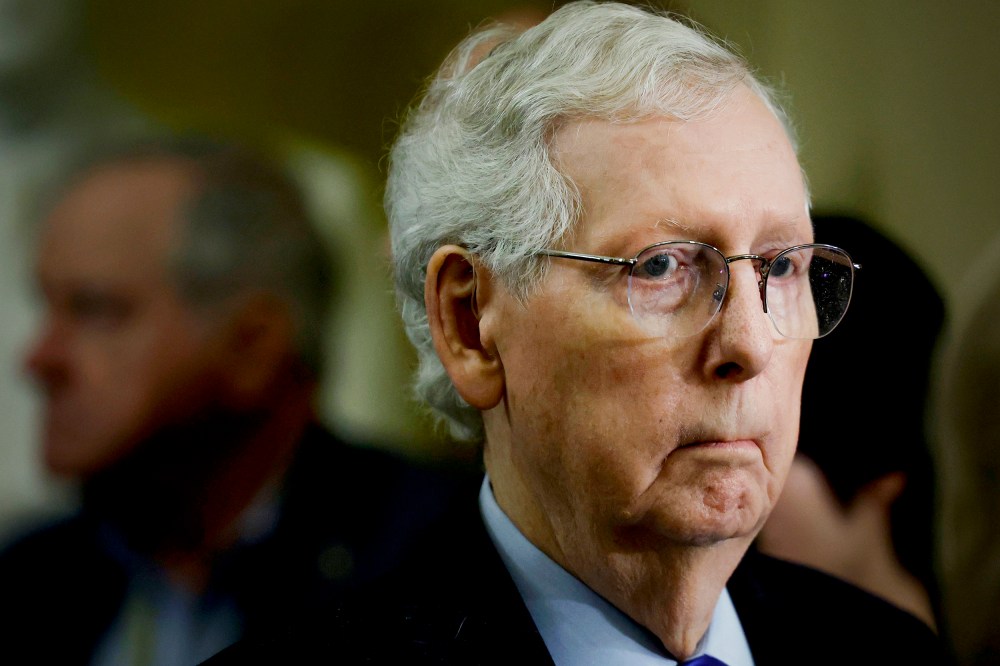On Tuesday, the little-known Judicial Conference of the United States — the policymaking arm of the federal judiciary — made some unusual headlines by announcing a new effort to make it harder for plaintiffs in certain lawsuits challenging state or federal policies to hand-pick the specific judge who hears their case. This crackdown on “judge shopping” is long overdue. It has also provoked a rather telling reaction from Republican Sens. Mitch McConnell, John Cornyn and Thom Tillis.
The little-known Judicial Conference of the United States — the policymaking arm of the federal judiciary — made some unusual headlines.
In a letter to the chief judges of all 94 federal district courts on Thursday, the senators urged those jurists to ignore the new policy — which they laid at the feet of Democratic Senate Majority Leader Chuck Schumer — because, in their view, these judges should ignore “partisan battles in Washington, D.C.” But it’s judge shopping itself, not efforts by the judiciary to rein it in, that have become a “partisan battle.” The McConnell/Cornyn/Tillis letter, ironically, only drives that point home.
By way of background, every state has at least one federal district court; some states have as many as four — staffed by somewhere between two and 28 active judges (along with “senior” judges, many of whom still hear cases). To help ensure that litigants don’t have to travel too far to reach their nearest federal courthouse, district courts are further subdivided — so that, in Texas, for instance, the four district courts have a total of 27 divisions. Because of these variations, district courts have long been left to their own devices to decide how to divide cases. And in some parts of the country, especially Texas, the result has been to allow a single judge to hear every case filed in a particular division.
Although this reality isn’t new, plaintiffs have increasingly taken advantage of these “single-judge” divisions to steer nationwide federal policy challenges to specific, ideologically sympathetic judges. For example, the nationwide challenge to the Food and Drug Administration’s approval of mifepristone (one of two drugs used in the most common and safest abortion procedure) was filed in Amarillo, Texas — not a courthouse with any specific connection to mifepristone, but one in which it had a 100% chance of being assigned to a certain Trump-appointed district judge, former anti-abortion advocate Matthew Kacsmaryk. Kacsmaryk remarkably, if predictably, ruled against the FDA’s approval of the drug — an approval that occurred 23 years ago.

A nationwide challenge to Biden administration efforts to combat social media disinformation was filed in Monroe, Louisiana — where it had a 100% chance of being assigned to Trump-appointed U.S. District Judge Terry Doughty. And the state of Texas, which has filed 37 different lawsuits in Texas district courts challenging Biden administration policies, has filed a majority of them in single-judge divisions — and none in Austin (where the Texas government is actually located) or Houston or Dallas or … you get the point.
The problem quickly became evident: Many of these cases were being filed in these remote jurisdictions entirely because it allowed the plaintiffs to hand-pick the specific judges who would hear them. Indeed, Texas publicly conceded that it was filing challenges in immigration cases in the Victoria division of the Southern District of Texas in order to draw Trump-appointed U.S. District Judge Drew Tipton. Even if the rules didn’t specifically prohibit exploiting the process this way, its repeated abuse became especially visible when two of the judges at issue — Tipton and Kacsmaryk — loudly rejected requests to transfer cases that had been shopped to them.
Quietly, some courts changed their case assignment rules. And some judges in single-judge divisions, like Judge Jeff Brown in Galveston, changed their local rules to require litigants to provide some justification for why a lawsuit with no obvious geographic tie to that division was nevertheless filed there. But these reforms were scattershot. Bigger changes required intervention at a higher level.












